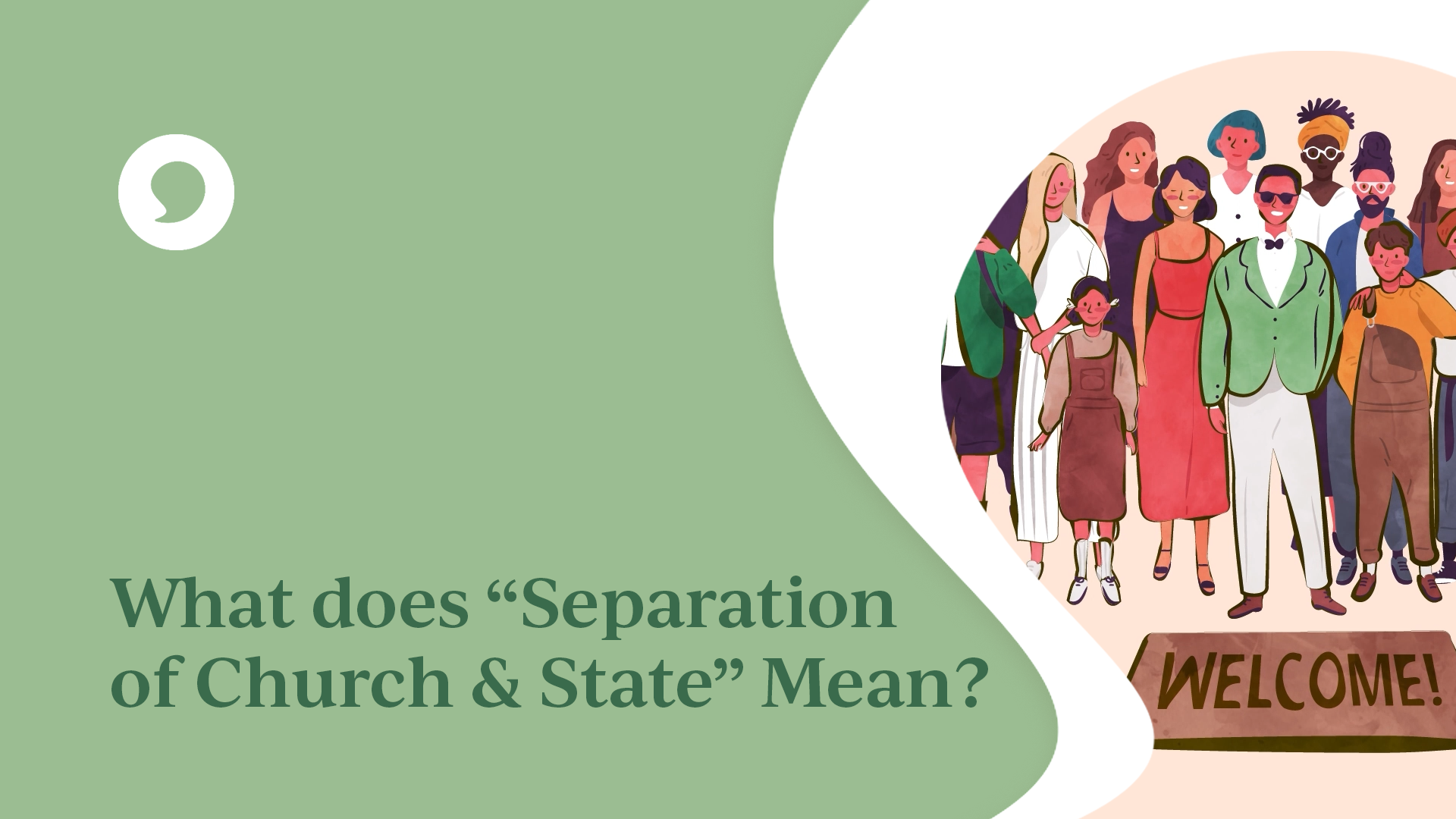3 min read
The Separation of Church and State Protects Us From Religious Ideas
Joseph Backholm Jan 8, 2020 4:02:47 AM
You’re in a conversation about church and politics and someone says “The Separation of Church and State means churches shouldn’t talk about political issues.”
What Would You Say?
The next time you hear someone say that the Separation of Church and State protects government from religious people and religious ideas, remember these three things:
1. The “Separation of Church and State” isn’t in the Constitution.
2. The Constitution protects the church from the state, not the State from the Church.
3. In public debates all ideas and all people are welcome. Even religious ones.
You’re in a conversation about church and politics and someone says “The Separation of Church and State means churches shouldn’t talk about political issues.” What Would You Say? We all agree that there shouldn’t be a government religion. Those have been common throughout history and America stands for the idea that government shouldn’t force you to believe anything or punish you because of what you believe. So in a sense, we do want church and state to be separate. But does that mean the constitution prohibits religious organizations, or even religious people, from talking about what is happening in government and culture? No. And here are three reasons why. 1. The Separation of Church and State isn’t in the Constitution. The phrase “separation of Church and State” is used so commonly that most people think it’s actually part of the Constitution. It’s not. It’s not in the Constitution, it’s not in the Declaration of Independence, it’s not even in local or state laws. The phrase originated in a letter that Thomas Jefferson wrote to a group of Baptists from Danbury, Connecticut. They were a minority religion and were concerned about government powers being used against them. President Jefferson wrote to them, saying “Believing with you that religion is a matter which lies solely between Man and his God, that he owes account to none other for his faith or his worship” the first amendment has “[built] a wall of separation between Church & State.” The phrase “separation of church and state” is a paraphrase of the First Amendment. And to the extent there is separation of church and state, its purpose is the exact opposite of what we often hear. Which leads to the second point. 2. The Constitution protects the church from the state, not the state from the church. When people talk about the separation of church and state, they often mean that its important to protect the government from the influence of religious institutions and people. But that’s exactly backwards from the concerns of our founders. As President Jefferson’s letter makes clear, they weren’t concerned about religious people influencing elections, they wanted to make sure the government couldn’t interfere with the way people lived and practiced their faith. That was, and is the real risk. Government influencing how people practice their faith is a problem. Religious people influencing the democratic process is freedom. Which leads to our third point. 3. In public debates all ideas are welcome. Even religious ones. We are all different, and that’s ok. It doesn’t matter if you were inspired by Jesus, Oprah, Freud, or the Wizard of Oz, your freedom to engage in the political process is the same as everyone else’s. That doesn’t mean all ideas are equally helpful, only that every person, group, or organization is equally welcome in the arena. The idea that “religious people are especially dangerous” is not in the Constitution, it’s in the minds of people who do not fear God, but do fear what could happen if people of faith were actively engaged in their community. The Constitution was not written to make some people afraid to talk about cultural issues or engage in public life, it was written to make sure no one was. So the next time you hear someone say that the Separation of Church and State protects government from religious people and religious ideas, remember these three things. 1. The Separation of Church and State isn’t in the Constitution. It’s a paraphrase of the First Amendment in a letter written by Thomas Jefferson. 2. The Constitution protects the Church from the State, not the State from the Church. 3. In public debates all ideas and all people are welcome. Even religious ones.
Thomas Jefferson's Letter to the Danbury Baptists: https://www.loc.gov/loc/lcib/9806/danpre.html
Breakpoint Article: "What "Separation of Church and State is Really About": https://breakpoint.org/what-separation-of-church-and-state-is-really-about/



